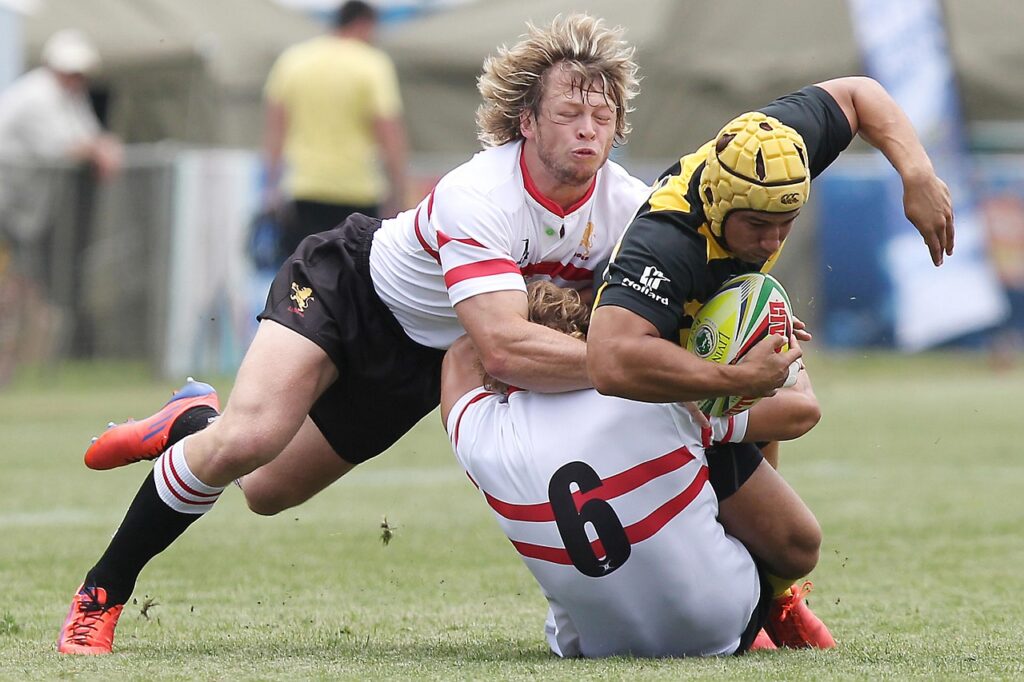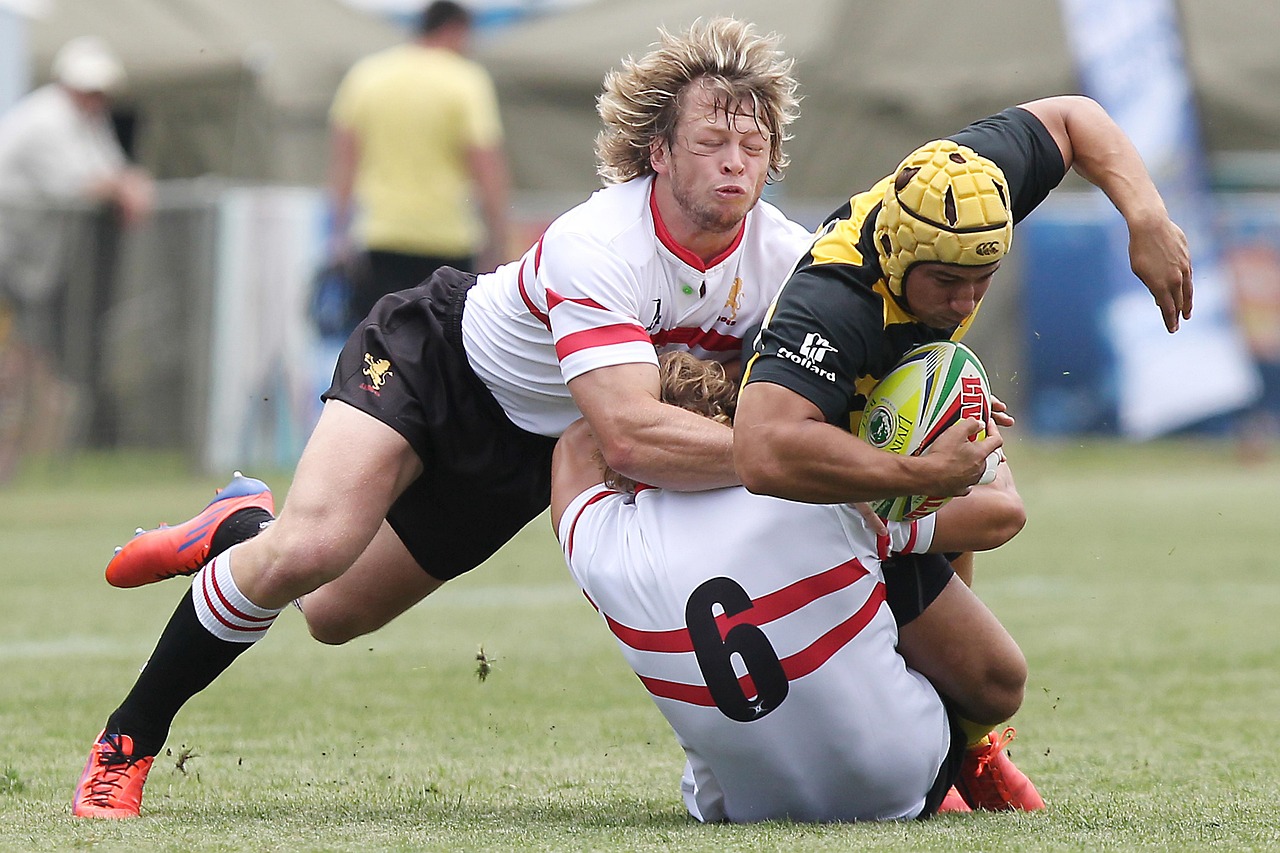Imagine stepping onto the rugby field for the first time, the grass is soft under your boots, the air buzzes with anticipation, and the roar of the crowd echoes in the distance. You’re ready to dive into the game, but one question lingers: what rugby position should I play or belong to?
Are you the powerhouse anchoring the scrum, the quick-thinking strategist directing the play, or the lightning-fast finisher racing down the wing? Finding the right rugby position isn’t just about fitting in—it’s about discovering where you can thrive and enjoy the sport to the fullest.
In this comprehensive guide, we’ll answer the question, “What rugby position should I play?” by breaking down the roles, traits, and skills needed for each spot on the field.
Whether you’re a beginner picking up a rugby ball for the first time or a player considering a position switch, this article will help you find your perfect fit. Stick around for our interactive quiz to pinpoint your ideal role and actionable tips to get started!
What Rugby Position Should I Play: Understanding Rugby Positions

Rugby is a unique sport that splits its 15 players into two distinct groups: forwards and backs. Each group has specific roles, and understanding their differences is the first step to finding your place on the team.
Forwards (Numbers 1-8)
These players are the muscle of the squad. They’re involved in scrums, where teams push against each other to win possession, and lineouts, where the ball is thrown back into play.
Forwards are typically bigger, stronger, and built for physicality. Their job is to secure the ball and create opportunities for the rest of the team. Think of them as the foundation—without their hard work, the game doesn’t flow.
Backs (Numbers 9-15)
These are the playmakers and speedsters. Once the forwards win possession, the backs take over, using their agility, speed, and tactical skills to advance the ball and score points. They excel in open spaces, relying on running, passing, and kicking to outmaneuver the opposition.
So, are you drawn to the gritty, close-contact world of the forwards or the fast-paced, open-play style of the backs? Let’s dig deeper into what factors can help you decide.
Factors to Consider When Choosing Your Rugby Position
Choosing a rugby position is about matching your strengths to the demands of the role. Here are the key elements to think about when asking, “What rugby position should I play?”
Physical Attributes
Your body type can naturally steer you toward certain positions:
- Height: Tall players (6’4” and up) are often perfect for locks, who dominate lineouts by leaping for the ball.
- Build: Stocky, muscular builds suit props and hookers, who need stability and power in the scrum.
- Speed: Leaner, faster players thrive as wings or fullbacks, where quickness is king.
That said, rugby is a sport for all shapes and sizes—don’t let your physique limit you too early.
Skills and Abilities
What you’re good at can narrow down your options:
- Tackling: Love hitting hard? Flankers and centres need strong defensive skills.
- Kicking: Got a golden boot? Fly-halves and fullbacks often handle kicking duties.
- Passing: Quick, accurate hands are a must for scrum-halves, who connect the team.
Personality and Mindset
Your mental approach matters just as much:
- Leadership: Fly-halves and scrum-halves often call the shots, so if you’re a natural leader, these could be your spots.
- Teamwork: Props and hookers thrive on collaboration, supporting their pack in every play.
- Competitiveness: Wings and centres need a hunger to win one-on-one battles.
Common Mistakes to Avoid When Choosing Your Rugby Position
Don’t fall into these traps when choosing your rugby position:
- Focusing Only on Size: A smaller player can still excel as a flanker with speed and technique.
- Ignoring Preferences: Pick a role you enjoy, not just one you think you “should” play.
- Sticking Too Soon: Experiment before committing—your first position might not be your best.
By weighing these factors, you’ll get a clearer picture of where you might fit on the rugby field.
Detailed Guide to Rugby Positions
Let’s break down each major position in a rugby union team of 15 players. For each, we’ll cover the role, ideal traits, and a famous example to inspire you.
Prop (Numbers 1 and 3)
- Role: Props are the anchors of the scrum, pushing against the opposition to win possession. They also tackle hard and support rucks.
- Ideal Traits: Strength, a low center of gravity, and stamina to endure constant physical battles.
- Famous Player: Tendai “The Beast” Mtawarira, whose scrummaging power overwhelmed opponents.
If you’re built like a tank and love the grind, prop could be your rugby home.
Hooker (Number 2)
- Role: Hookers “hook” the ball back in the scrum with their feet and throw it into lineouts with pinpoint accuracy.
- Ideal Traits: Strength, agility, and a sharp eye for throwing.
- Famous Player: Sean Fitzpatrick, a legend for his technical skill and leadership.
Hookers are small but mighty—perfect if you’re precise and tough.
Lock (Numbers 4 and 5)
- Role: Locks win lineouts by jumping for the ball and add bulk to scrums and mauls.
- Ideal Traits: Height (often 6’5”+), strength, and coordination.
- Famous Player: Martin Johnson, a towering figure who led England to World Cup glory.
Tall and powerful? Lock might be your calling.
Flanker (Numbers 6 and 7)
- Role: Flankers tackle relentlessly, steal possession at breakdowns, and support everywhere on the field.
- Ideal Traits: Stamina, tackling prowess, and speed to cover ground.
- Famous Player: Richie McCaw, a turnover machine and one of rugby’s greatest.
If you’re a high-energy player who loves chaos, flanker is for you.
Number 8
- Role: Controls the ball at the scrum’s base, carries it forward, and bridges forwards and backs.
- Ideal Traits: Power, ball-carrying ability, and tactical awareness.
- Famous Player: Kieran Read, known for his dynamic runs and smart play.
Number 8s are versatile and impactful—great if you want to stand out.
Scrum-Half (Number 9)
- Role: Feeds the scrum and distributes the ball, acting as the team’s link player.
- Ideal Traits: Quick hands, agility, and sharp decision-making.
- Famous Player: Aaron Smith, whose rapid passes revolutionized the game.
Small, fast, and clever? Scrum-half could be your spot.
Fly-Half (Number 10)
- Role: Runs the attack, makes tactical decisions, and kicks for points or territory.
- Ideal Traits: Vision, kicking accuracy, and coolness under pressure.
- Famous Player: Dan Carter, a maestro with the boot and brain.
Love strategy and leadership? Fly-half is your stage.
Centre (Numbers 12 and 13)
- Role: Breaks through defenses, sets up wings, and shuts down opposition attacks.
- Ideal Traits: Speed, strength, and defensive solidity.
- Famous Player: Brian O’Driscoll, a centre with flair and ferocity.
Centres are all-rounders—ideal if you’re balanced and competitive.
Wing (Numbers 11 and 14)
- Role: Scores tries, finishes moves, and chases kicks with blazing speed.
- Ideal Traits: Speed, agility, and a nose for the try line.
- Famous Player: Jonah Lomu, whose pace and power redefined the wing.
Fast and fearless? Wing is your territory.
Fullback (Number 15)
- Role: Catches high balls, counters attacks, and defends the backfield.
- Ideal Traits: Kicking, catching, and attacking instincts.
- Famous Player: Beauden Barrett, a fullback with flair and precision.
If you’re calm and creative, fullback might be your fit.
Find Your Position: A Simple Quiz
Still wondering, “What rugby position should I play?” Take this quick quiz to get a starting point. Answer these questions and tally your results:
Do you prefer physical contact or open space?
A) Physical contact (Forwards)
B) Open space (Backs)
Are you more about strength or speed?
A) Strength (Forwards)
B) Speed (Backs)
Do you enjoy leading or supporting?
A) Leading (e.g., Fly-Half, Scrum-Half)
B) Supporting (e.g., Prop, Lock)
Are you taller or shorter than average?
A) Taller (e.g., Lock)
B) Shorter (e.g., Prop, Scrum-Half)
What skill do you enjoy most?
A) Tackling (e.g., Flanker, Centre)
B) Kicking (e.g., Fly-Half, Fullback)
C) Running (e.g., Wing, Number 8)
Do you thrive under pressure or prefer steady work?
A) Pressure (e.g., Fly-Half, Fullback)
B) Steady work (e.g., Prop, Flanker)
Results
- Mostly A’s: You’re likely a forward—try Prop, Hooker, Lock, Flanker, or Number 8.
- Mostly B’s: You’re a back—explore Scrum-Half, Fly-Half, Centre, Wing, or Fullback.
- Mixed Answers: You’re versatile—test Flanker or Number 8 (forwards) or Centre (backs).
This quiz is a fun guide—your true position will reveal itself with experience.
Tips for Trying Out Positions and Improving Your Skills
Ready to find your rugby position? Here’s how to get started and grow:
- Talk to Coaches: They’ll spot your strengths and suggest roles to try.
- Experiment in Practice: Play multiple positions to see what clicks. Don’t lock in too soon.
- Build Core Skills: Work on tackling, passing, and fitness—versatility pays off.
- Study the Game: Watch pros like Richie McCaw or Dan Carter to learn positioning and tactics.
- Train Smart: Focus on strength for forwards, speed for backs, and endurance for all.
- Get Feedback: Ask teammates how you perform in different roles.
Finding your spot takes trial and error, but every practice brings you closer.
Conclusion
Answering “What rugby position should I play?” is about discovering where your body, skills, and passion align. From the powerhouse props to the fleet-footed wings, every role offers a unique way to enjoy this incredible sport.
Use our guide and quiz to explore your options, then hit the field to test them out. Rugby welcomes everyone—your perfect position is out there, waiting for you to claim it. So, lace up your boots, talk to your coach, and start your journey today.
What’s your favorite rugby position—or the one you’re leaning toward? Drop your thoughts in the comments and let’s chat!
